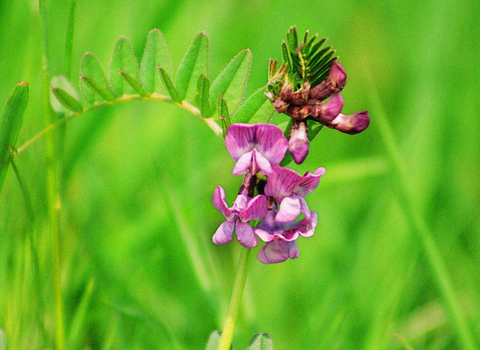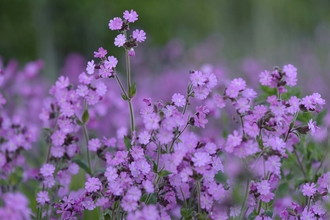
©John M Haddon
Bush vetch
A scrambling plant, Bush vetch has lilac-blue flowers. It is a member of the pea family and can be seen along woodland edges and roadside verges, and on scrubland and grassland.
Scientific name
Vicia sepiumWhen to see
April to NovemberSpecies information
Category
Statistics
Height: up to 1mConservation status
Common.


